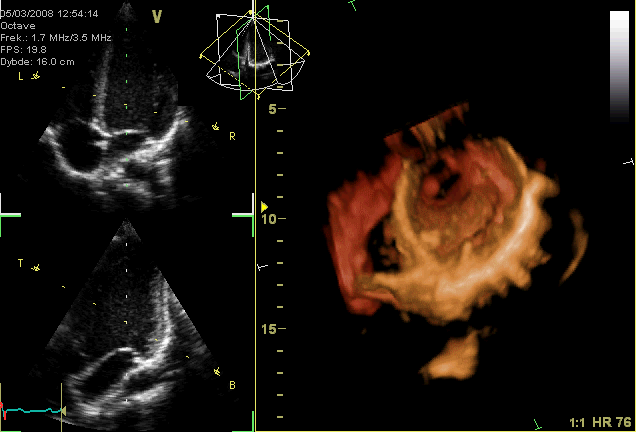Cardiac Function on:
[Wikipedia]
[Google]
[Amazon]
Cardiac physiology or heart function is the study of healthy, unimpaired function of the

 The heart functions as a pump and acts as a double pump in the
The heart functions as a pump and acts as a double pump in the
Blood flows through the heart in one direction, from the atria to the ventricles, and out through the
heart
The heart is a muscular organ found in most animals. This organ pumps blood through the blood vessels of the circulatory system. The pumped blood carries oxygen and nutrients to the body, while carrying metabolic waste such as carbon diox ...
: involving blood flow; myocardium
Cardiac muscle (also called heart muscle, myocardium, cardiomyocytes and cardiac myocytes) is one of three types of vertebrate muscle tissues, with the other two being skeletal muscle and smooth muscle. It is an involuntary, striated muscle tha ...
structure; the electrical conduction system of the heart; the cardiac cycle and cardiac output and how these interact and depend on one another.
Blood flow

 The heart functions as a pump and acts as a double pump in the
The heart functions as a pump and acts as a double pump in the cardiovascular system
The blood circulatory system is a system of organs that includes the heart, blood vessels, and blood which is circulated throughout the entire body of a human or other vertebrate. It includes the cardiovascular system, or vascular system, tha ...
to provide a continuous circulation of blood throughout the body. This circulation includes the systemic circulation
The blood circulatory system is a system of organs that includes the heart, blood vessels, and blood which is circulated throughout the entire body of a human or other vertebrate. It includes the cardiovascular system, or vascular system, tha ...
and the pulmonary circulation
The pulmonary circulation is a division of the circulatory system in all vertebrates. The circuit begins with deoxygenated blood returned from the body to the right atrium of the heart where it is pumped out from the right ventricle to the lung ...
. Both circuits transport blood but they can also be seen in terms of the gases they carry. The pulmonary circulation collects oxygen from the lungs and delivers carbon dioxide for exhalation. The systemic circuit transports oxygen to the body and returns relatively de-oxygenated blood and carbon dioxide to the pulmonary circuit.Blood flows through the heart in one direction, from the atria to the ventricles, and out through the
pulmonary artery
A pulmonary artery is an artery in the pulmonary circulation that carries deoxygenated blood from